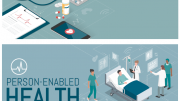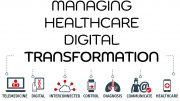With Primary Care Networks the future cornerstone of primary care delivery within evolving integrated care systems, sophisticated digital communications will be essential for supporting delivery of high-quality care and ensuring digital inclusion. Here, Paul Bensley, Managing Director of cloud telephony specialists X-on, outlines a possible roadmap for PCN onboarding of cloud telephony.
In recent months the pace of expansion of cloud-based telephony systems within general practice throughout England has significantly picked up and become a clear target for primary care.
Last autumn the NHS emphasised that it would be supporting and helping drive full adoption of such systems throughout GP practices as rapidly as possible, extending adoption way beyond the current estimated quarter of practices that have cloud telephony communications.
Earlier this year, NHSX, now being merged into the NHS’ new central transformation directorate, conducted a short exercise among suppliers via questionnaire. The aim was to try to assess and define the current state of the cloud telephony market ahead of developing a national framework for GP cloud telephony with agreed standardisation. The results of that exercise are eagerly awaited.
We have now arrived at a position where, driven by demands of the pandemic for functionality such as remote consultation and triage, more sophisticated telephony systems will be essential as practices and the wider Primary Care Networks (PCNs) continue to evolve within regions. This is addressing not just the day-to-day patient requirements but also the more macro health challenges within regional health populations.
Cloud telephony lies at the heart of evolving digital delivery of patient care and will ensure that all patients have a choice of their preferred channel – cloud-based, online or app – avoiding for instance digital exclusion of patient cohorts who may prefer the telephone rather than going online.
One fundamental truth relating to practice telephony though that was emphasised during the pandemic was the varying picture within regions of telephony provision and quality, with many practices still working on elderly legacy phone systems.
This made it hard for significant numbers of practices to offer the more flexible support for triage and remote consultation that was being centrally directed.
Adoption of cloud telephony brings an immediate impact on basic communications efficiency and consultation flexibility, irrespective of the subsequent debate on what level of face-to-face appointments it is acceptable for practices to offer post the pandemic peak. It enables more phone lines for inbound and outbound calls, supports automated queuing systems, and underpins the capture of data on patient demand and call traffic.
Crucially for the future, without a cloud telephony system it is impossible for a practice or PCN to gauge a true picture of patient demand as the level of patients abandoning calls due to the time they are having to wait to get through is not captured.
So what are the realistic key phases for PCNs in establishing a standardised cloud telephony solution at scale? We see four such phases.
The first of these is a migration phase with practices moving to a selected cloud telephony system, as local legacy contracts expire, that transforms practice-patient communication through advanced digital technology. This move means a practice can establish a standard, normalised patient call experience, with supporting functionality of automated patient call-back, inbound patient caller identity, and support for video consultation, SMS messaging and photo transfer to help consultation. There is also the opportunity for inclusion of sophisticated desktop tools for clinicians that enable, for example, a call by simply clicking on an entry in the practice patient list. Remote staff working would also be supported.
The next phase would be for consolidation of integrated cloud telephony across the PCN, supported by a dedicated PCN call centre.
This would underpin a centralised system supporting effective workforce management, staff assigned to handling inbound calls at individual practices or separately outbound calls perhaps from a PCN centre. Additional sophistication such as patient identification alongside highlighting their registered practice would be introduced, as well as flexibility such as non-location specific working for staff, and information management at scale.
Next, of course let’s not forget the key customer – the patient – and a third phase of implementation we believe would need to focus on explaining to patients about the evolving way in which modern general practice is delivered.
This is an empowering phase, instilling in patients the confidence and knowledge that they can book and manage online their phone and face-to-face appointments and manage their prescriptions.
In parallel, data informing a wider view of health across a population can be gathered from patients through phone questionnaires. Priority routing for individual patients or cohorts can be set up, as well as signposting for patients to specialised services and provision on a clinical call to online resources.
Finally, with a clear eye on the remit of the 1,250 or so PCNs in England, we visualise a fourth phase focused on future continuous improvement to supporting cloud telephony to develop improved access to care services for patients and an extended range of services.
By consolidating substantial volumes of data across the PCN and using AI to analyse it, PCNs will be able to take a proactive approach to managing local population health and identify patients for intervention and support, ranging from early cancer and cardiovascular disease diagnosis through to physio and social prescribing support.
Crucially, cloud telephony communications systems will be embedded at the heart of this future multi-channel digital approach to primary patient care.
Further background on how cloud telephony can support PCNs is available here.





